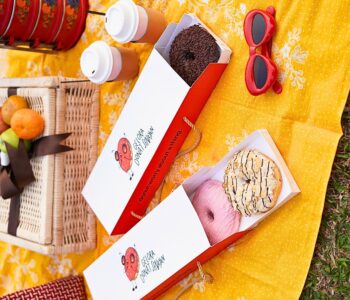In late November 2018, I led an Indonesia Heritage Society (IHS) Heritage Tour for a small group of textile lovers to Lake Toba. From watching weavers practice their craft to spectacular views, this was a wonderful excursion.

Lake Toba, the land of the Batak tribes, is a vast area. Toba Odyssey (www.tobaodyssey.com) helped me arrange the logistics and to find our way to the small traditional villages and best ulos weavers. Our first stop was the Tjong A Fie mansion, a beautiful home built by a wealthy merchant who wisely partnered with the local sultan. He owned three banks, plantations and other businesses interests, yet as mayor of Medan was well loved by the community. A granddaughter still lives in one part of the traditional Chinese structure.
Our group was lucky with good weather in the morning to drive up to the one tree hill above Lake Toba for a view of the sunrise. It was spectacular and such a pleasure to experience cooler weather, clean air and a marvelous view!
We wanted to visit the waterfall and fortunately the the ranger permitted us to visit – and guided us during the trip explaining the floral and fauna.

Late morning we showered then enjoyed Soto Medan for lunch at the resort. It was delicious! Back in the van we drove to the weaving village of Purba Tongah, the village where the master weaver, Oppung Simarmata, lives. We did pull off to buy freshly harvested Medan oranges, or as the Batak call them Jeruk Madu, for just IDR 30,000 for two kilograms.
The weavers in the tiny village were so kind and hospitable. They laid down mats for us to sit upon while we watched 80-year-old Oppung and her 20-year-old granddaughter Fino weave. The other women sat eating beetle nut and communicating with us. Our textile group all had some weaving experience so there were technical questions for the weavers.
We also spent a day— market day— in Panguruan (Onan Baru). The pasar was lively and our members bought ikat threads to warp their own looms, traditional bags of woven pandas leaves and more.

We then travelled with Tetti Naibaho, from Dinas Kebudayaan Samosir to the village of Tanjung Bunga. It was there we met the lovely ladies of the KBU Bintang Maratur Weavers co-op. Our group included weavers, and with David Yanes translating, more technical questions about the weaving could be asked. Rita Sinurat and Baru Sitanggang and Malau, sat at blackstrap looms working on pieces for the Karo Batak. Heirloom pieces were brought out to share and explain the meaning or use, plus pieces for sale that had just come off looms but needed to be finished. All of us are in the IHS textile study group and could not resist the lure of purchasing traditional Batak tenun! Each piece is truly a work of art but also full of cultural meaning.
We also stopped at Hutaraja, Lumbansuhi, a traditional village on Samosir Island. Only two weavers were working as we arrived, but more sat at their looms as time went on. Of course they brought finished pieces out, carefully noting which kind and colours each of us was attracted to. When one brought out older pieces the shopping intensified. The veteran weaver, Lasmaria Baru Simarmata, who wove for Pope John Paul II, was a fountain of knowledge. She could explain the meaning of each part of the patterns of the traditional textile pieces. Together we purchased five pieces and the weavers were very happy as we departed. This village was a delight for textile lovers, but also for all who are intrigued by the traditional Batak homes. It is a stop sure to please all photographers.
We then left Samosir Island and headed off to Lumban Lobu, Tobasa regency. Some of the highlights of the trip included seeing the weavers in Silaen village: Asti and her sister Herta are master weavers. In fact First Lady Ibu Iriana and Christine Lagarde of the World Bank have her weavings. We also visited the Batak Museum (TB Silalahi Center). We first visited the museum to see each of the Batak tribes costumes, ulos, as well their baskets, tools, and much more. This is well worth visiting! We then visited the Huta Batak with several traditional Toba houses.

Towards the end of the trip we went to Batikta, a shop in Balige that has nice souvenirs. They had a new room full of handwoven ulos that was developed after their Tenun Festival this year. With so many different ulos on display one can not help but be tempted!
We also visited Lintong Coffee in Lintong Nihuta, and met Gani Silaban, the innovative coffee farmer. We were given information about the coffee production and then we enjoyed a tasting of Arabica and luwak coffees, an enjoyable stop.
All of us enjoyed our trip immensely. For me it had been so easy to lead as I had David and Roy from Toba Odyssey do all the planning and logistics. Heritage Tours are just one exciting way for the Indonesian Heritage Society to educated us about wonderful Indonesia! Consider joining us!!
The Indonesian Heritage Society is a non-profit organization offering the opportunity to learn more about the rich cultural heritage of Indonesia. The varied activities of the society, including explorers, lectures, study groups, and tours, provide a stepping stone toward discovering the culture, life, history, and art of this vast archipelago.
Text by Maribeth Peller. This article is originally from paper. Read NOW!Jakarta Magazine February 2019 issue “Love and Romance”. Available at selected bookstore or SUBSCRIBE here.






